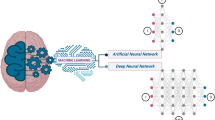Abstract
Introduction
Primary breast augmentation is one of the most commonly requested aesthetic procedures. Considering the large number of procedures performed in connection with a high demand, it is crucial to prevent complications. For this reason, finding and avoiding possible sources of complications is decisive.
Methods
Between January 2010 and December 2021, 1625 female patients underwent an aesthetic breast augmentation performed by a single surgeon. The data collected were analyzed through a machine learning technique for binary recursive partitioning. This made it possible to detect unknown sources of a complication and determine a vertex for the various features.
Results
When analyzing the data, for most features a high importance score with low entropy was achieved, concluding a high significance. In addition, reproducibility was demonstrated through detailed testing and training accuracies in the algorithm. With this procedure, in addition to known risks such as a high BMI and round implant shape, a larger than A preoperative bra-cup size (OR: 2.7) and a taller body could also be identified as most significant influencing factors for complications.
Discussion
Preoperative breast size plays an exceptionally important role in the occurrence of complications and should be a factor held in a surgeon’s considerations. In addition, this study shows ways to transfer artificial intelligence into plastic surgery to increase medical quality.
Level of Evidence IV
This journal requires that authors assign a level of evidence to each article. For a full description of these Evidence-Based Medicine ratings, please refer to the Table of Contents or the online Instructions to Authors www.springer.com/00266.






Similar content being viewed by others
References
ASPS Plastic Surgery Statistics Report 2020. Dallas
Araco A, Gravante G, Araco F et al (2007) A retrospective analysis of 3000 primary aesthetic breast augmentations: postoperative complications and associated factors. Aesthetic Plast Surg 31:532–539. https://doi.org/10.1007/s00266-007-0162-8
Montemurro P, Cheema M, Hedén P et al (2019) Benchmarking the outcomes of single-stage augmentation Mastopexy against primary breast augmentation. Plast Reconstr Surg 144:326–334. https://doi.org/10.1097/PRS.0000000000005849
Alderman AK, Collins ED, Streu R et al (2009) Benchmarking outcomes in plastic surgery: national complication rates for abdominoplasty and breast augmentation ‘outcomes article]. Plast Reconstr Surg 124:2127–2133. https://doi.org/10.1097/PRS.0b013e3181bf8378
Doren EL, Pierpont YN, Shivers SC, Berger LH (2015) Comparison of Allergan, Mentor, and Sientra contoured cohesive gel breast implants. Plast Reconstr Surg 136:957–966. https://doi.org/10.1097/PRS.0000000000001675
Adams WP Jr, Culbertson EJ, Deva AK et al (2017) Macrotextured breast implants with defined steps to minimize bacterial contamination around the device: experience in 42,000 implants. Plast Reconstr Surg 140:427–431
Boustany AN, Elmaraghi S, Agochukwu N et al (2018) A breast prosthesis infection update: two-year incidence, risk factors and management at single institution. Indian J Plast Surg 51:7–14. https://doi.org/10.4103/ijps.IJPS_215_17
Chen CL, Shore AD, Johns R et al (2011) The impact of obesity on breast surgery complications. Plast Reconstr Surg 128:395e–402e
Sforza M, Husein R, Atkinson C, Zaccheddu R (2017) Unraveling factors influencing early seroma formation in breast augmentation surgery. Aesthetic Surg J 37:301–307
Hedén P, Jernbeck J, Hober M (2001) Breast augmentation with anatomical cohesive gel implants: the world’s largest current experience. Clin Plast Surg 28:531–552
Parshall MB (2013) Unpacking the 2 × 2 table. Hear Lung 42:221–226. https://doi.org/10.1016/j.hrtlng.2013.01.006
Sheskin DJ (2020) Handbook of parametric and nonparametric statistical procedures. Chapman and Hall/CRC, UK
Shen Z, Chen X, Sun J et al (2019) A comparative assessment of three planes of implant placement in breast augmentation: a Bayesian analysis. J Plast Reconstr Aesthetic Surg 72:1986–1995. https://doi.org/10.1016/j.bjps.2019.09.010
Prasad AM, Iverson LR, Liaw A (2006) Newer classification and regression tree techniques: bagging and random forests for ecological prediction. Ecosystems 9:181–199
Chester R, Khondoker M, Shepstone L et al (2019) Self-efficacy and risk of persistent shoulder pain: results of a Classification and Regression Tree (CART) analysis. Br J Sports Med 53:825–834
Kanevsky J, Corban J, Gaster R et al (2016) big data and machine learning in plastic surgery. Plast Reconstr Surg 137:890e–897e. https://doi.org/10.1097/PRS.0000000000002088
Liang X, Yang X, Yin S et al (2021) Artificial intelligence in plastic surgery: applications and challenges. Aesthetic Plast Surg 45:784–790. https://doi.org/10.1007/s00266-019-01592-2
Jarvis T, Thornburg D, Rebecca AM, Teven CM (2020) Artificial intelligence in plastic surgery. Plast Reconstr Surg - Glob Open 8:e3200. https://doi.org/10.1097/GOX.0000000000003200
Funding
Dr. Montemurro is a plastic surgeon in private practice at Akademikliniken, Stockholm, Sweden The authors declared no potential conflicts of interest with respect to the research, authorship, and publication of this article. The authors received no financial support for the research, authorship, and publication of this article.
Author information
Authors and Affiliations
Corresponding author
Ethics declarations
Conflict of interest
The authors declare that they have no conflicts of interest to disclose.
Human and Animals Rights
This article does not contain any studies with human participants or animals performed by any of the authors. For this type of study informed consent is not required.
Informed Consent
All patients were counselled in accordance with the Declaration of Helsinki guidelines and written informed consent was obtained preoperatively.
Additional information
Publisher's Note
Springer Nature remains neutral with regard to jurisdictional claims in published maps and institutional affiliations.
Rights and permissions
About this article
Cite this article
Montemurro, P., Lehnhardt, M., Behr, B. et al. A Machine Learning Approach to Identify Previously Unconsidered Causes for Complications in Aesthetic Breast Augmentation. Aesth Plast Surg 46, 2669–2676 (2022). https://doi.org/10.1007/s00266-022-02997-2
Received:
Accepted:
Published:
Issue Date:
DOI: https://doi.org/10.1007/s00266-022-02997-2




